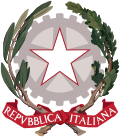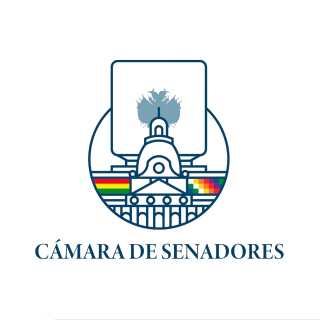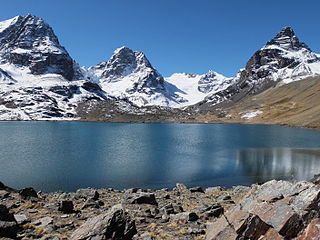
The La Paz Department of Bolivia comprises 133,985 square kilometres (51,732 sq mi) with a 2012 census population of 2,706,359 inhabitants. It is situated at the western border of Bolivia, sharing Lake Titicaca with adjacent Peru. It contains the Cordillera Real, which reaches altitudes of 6.6 kilometers (22,000 ft). Northeast of the Cordillera Real are the Yungas, the steep eastern slopes of the Andes Mountains that make the transition to the Amazon River basin to the northeast. The capital of the department is the city of La Paz and is the administrative city and seat of government/national capital of Bolivia.

Pedro Domingo Murillo is a province in the Bolivian La Paz Department. It was created on January 8, 1838, with the name Cercado and on October 17, 1912, during the presidency of Eliodoro Villazón, its name was changed in honor of Pedro Domingo Murillo, protagonist of the revolution of June 16, 1809.

The Bolivian Palace of Government, better known as Palacio Quemado, was the official residence of the President of Bolivia from 1853 to 2018 and again briefly from 2019 to 2020. It is located in downtown La Paz on Plaza Murillo, next to the La Paz Cathedral and across from the Bolivian legislature. On 9 August 2018, it was replaced by the Casa Grande del Pueblo as the residence of the president by President Evo Morales. The interim government of Jeanine Áñez briefly reverted to occupying the Palacio Quemado from 2019 until 2020 when the newly elected Luis Arce returned to using the Casa Grande. It now serves as a museum.

Guaqui is a railhead and port in Bolivia on Lake Titicaca. A ferry connects with the Peruvian railhead and port on Puno. It served as location of Inca ruins prior to the arrival of the Spanish. The towns current church sites on what was the ancient ruins.

Desaguadero Municipality is the fourth municipal section of Ingavi Province in La Paz Department, Bolivia. Its capital is Desaguadero.

Universidad Mayor de San Andrés or UMSA is the leading public university in Bolivia, established since 1830 in the city of La Paz. UMSA is the second-oldest university in Bolivia, after the University of San Francisco Xavier de Chuquisaca (1624).

Calamarca or Qala Marka is the fourth municipal section of Aroma Province in the La Paz Department of Bolivia. It is located on the Altiplano and its seat is the town of Calamarca.
Collana Municipality is the seventh municipal section of the Aroma Province in the La Paz Department, Bolivia. Its seat is Collana.
Colquencha Municipality is the sixth municipal section of the Aroma Province in the La Paz Department, Bolivia. Its seat is Colquencha.
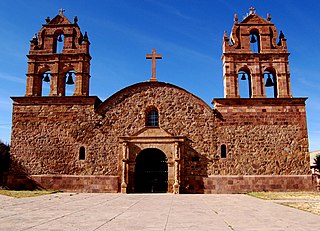
Laja Municipality is the second municipal section of the Los Andes Province in the La Paz Department, Bolivia. Its seat is Laja.
Puerto Pérez or Ch'ililaya (Aymara) is the fourth municipal section of the Los Andes Province in the La Paz Department, Bolivia. Its seat is Puerto Pérez.
Tito Yupanqui Municipality is the third municipal section of the Manco Kapac Province in the La Paz Department, Bolivia. Its seat is Tito Yupanqui.
Colquencha is a town in Aroma Province in the La Paz Department, Bolivia. It is the seat of the Colquencha Municipality.
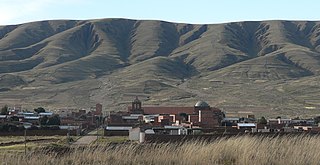
Tiwanaku is a village in the La Paz Department, Bolivia with a population of 860 people. Towards the south of the village, there's the archaeological site of Tiwanaku.
Tito Yupanqui is a town in the La Paz Department, Bolivia. It was named after an indigenous artist, Francisco Tito Yupanqui, a 16th-century wood sculptor who sculpted a statue of the Mary, mother of Jesus, known as Our Lady of Candles.
San Andrés de Machaca is a town in the La Paz Department, Bolivia.
Taraco, La Paz is a town in the La Paz Department, Bolivia.
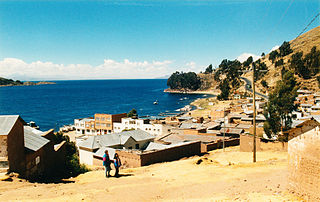
San Pedro de Tiquina is a town in the La Paz Department, Bolivia.
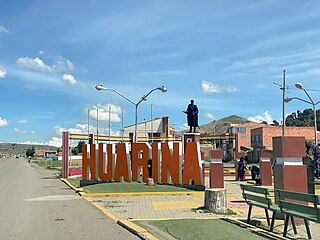
Huarina is a location in the La Paz Department in Bolivia. It is the seat of the Huarina Municipality, one of the four municipalities of the Omasuyos Province. President of Peru Andrés de Santa Cruz was born here.
